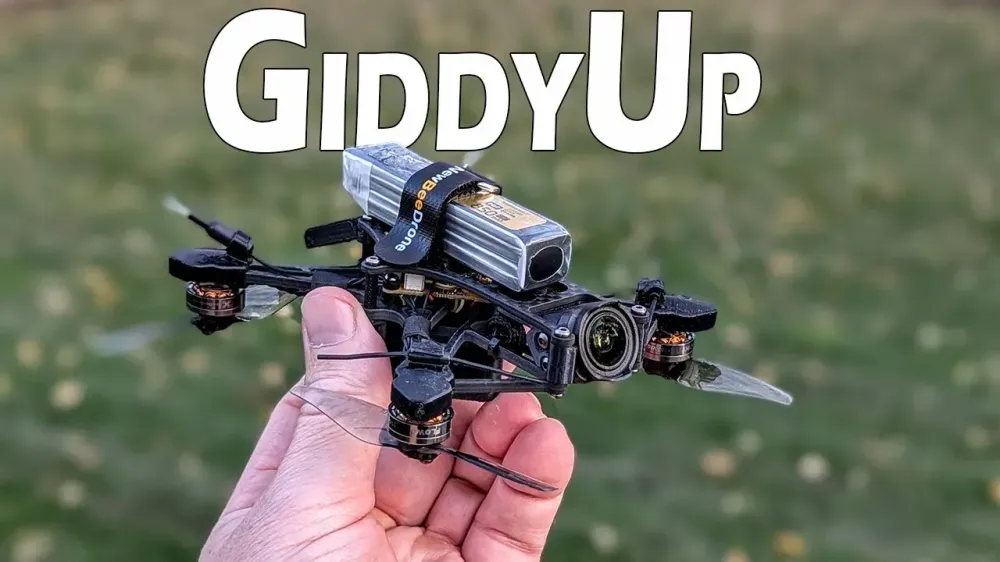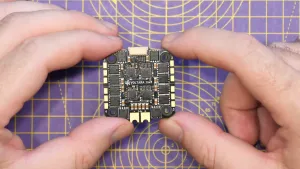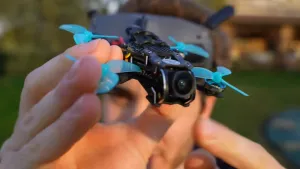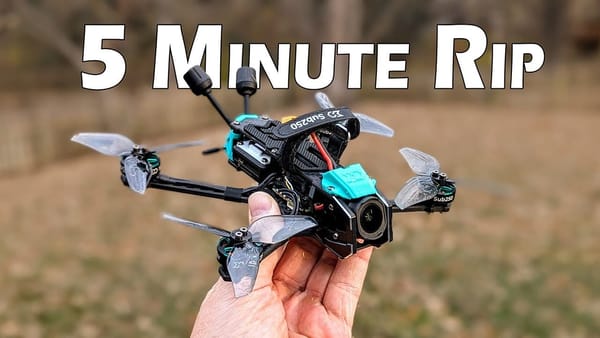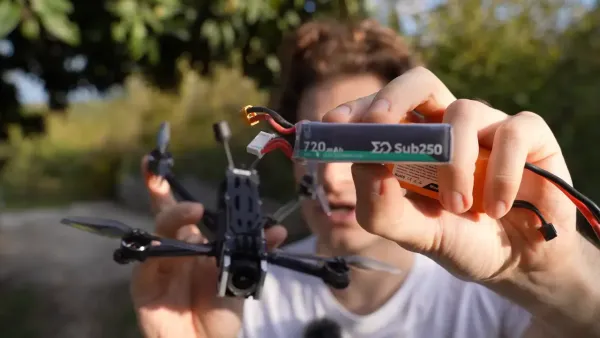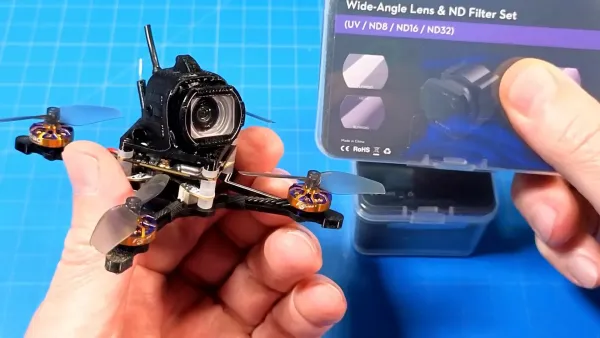Nick Burns delves into the realm of FPV drones by investigating the Savage Bee Pusher, from Newbie Drone. This particular drone stands out in the micro quadcopter segment due, to its inverted propeller configuration. Lets delve into the specifics and perspectives that Nick reveals about this piece of tech.
Design and Build
The compact Savage Bee Pusher stands out with its design that utilizes inverted props and motors of the typical upright props seen in the Savage Bee model for a distinct flying experience. Nick was pleasantly surprised by the drones speed capabilities despite his doubts. Although the flight controller is convenient to access with its USB connection option some users might feel let down by its lack of USB C compatibility.

The drone is equipped with Nubidrone Flow 1202 motors operating at 11, 420 kilovolts. Paired with Jim Fan 3018 two blade propellers, for performance. The use of a 20 Amp ESC ensures operation. Nick mentions the integration of a Newbie Drone M10 Q micro GPS system , which is now a popular feature, in contemporary drones.

Camera flexibility is another strong point, with adjustable angles thanks to two camera screws. Nick mentions that the materials used in the 3D print of the drone’s body are intriguing, though he admits he isn’t an expert in 3D printing.
Flight Characteristics
Nick offers tips, for flying the Savage Bee Pusher with its inverted design that necessitates a distinct takeoff and landing approach to prevent clipped props and ensure safe operations without damaging the propellers; smooth landings are crucial according to him.

Nick found that the drone handled smoothly in weather conditions with winds as strong, as 20 miles per hour. He admires the drones performance in situations as it proves ideal, for flights. Additionally he highlights the added sense of security provided by its GPS features for enthusiasts of long distance flying.
Battery Life and Performance
Nick experimented with batteries to test the drone. He tried out a 550 mAh Tattoo battery and an 850 mAh one well. He mentioned that the flight durations could differ quite a bit depending on the batterys health and how its used. While the advertised flight time is three minutes Nick found that, with flying the actual flight times were slightly longer than expected.

He mentions that the drone is actually more reactive than he originally anticipated and finds it pleasantly surprising. _, He also wishes for a model of the drone as he believes that cutting down on weight could improve its performance_ especially for individuals who enjoy a more dynamic flying approach.
Construction and Durability
Nick emphasizes the build of the Savage Bee Pusher drone by mentioning the utilization of 2mm carbon fiber, on the top plate and 3mm on the bottom layer for added resilience, against rough landings.

He also points out that the drones weight is not too heavy, due to the motor and propeller setup in place.The addition of a capacitor aids, in maintaining video quality stability for a flying experience.
Conclusion and Pricing
The Savage Bee Pusher costs $399. Comes with an ExpressLRS receiver included in the package. Nick hopes that a camera free version will be released for users seeking to reduce weight and improve performance. He mentions that despite not having flown the Savage Bee model the Pusher version provides an exciting flying experience that surpasses first impressions.

FAQs
What makes the Savage Bee Pusher different from traditional drones?
The unique feature of the Savage Bee Pusher is its inverted prop design that alters the way it flies and demands pilots to adapt their takeoff and landing methods.
How does GPS work with the Savage Bee Pusher?
The drone comes with a GPS system that can be turned on for rescue purposes if the video signal is lost or during emergencies to provide peace of mind.
What is the expected flight time?
The duration of flights may differ slightly; typically users can anticipate three minutes of flight time with a 550 mAh battery and longer periods, with larger batteries.
Is the Savage Bee Pusher suitable for beginners?
For newcomers, to flying drones, with an inverted design may need some practice to get the hang of taking off and landing smoothly.


